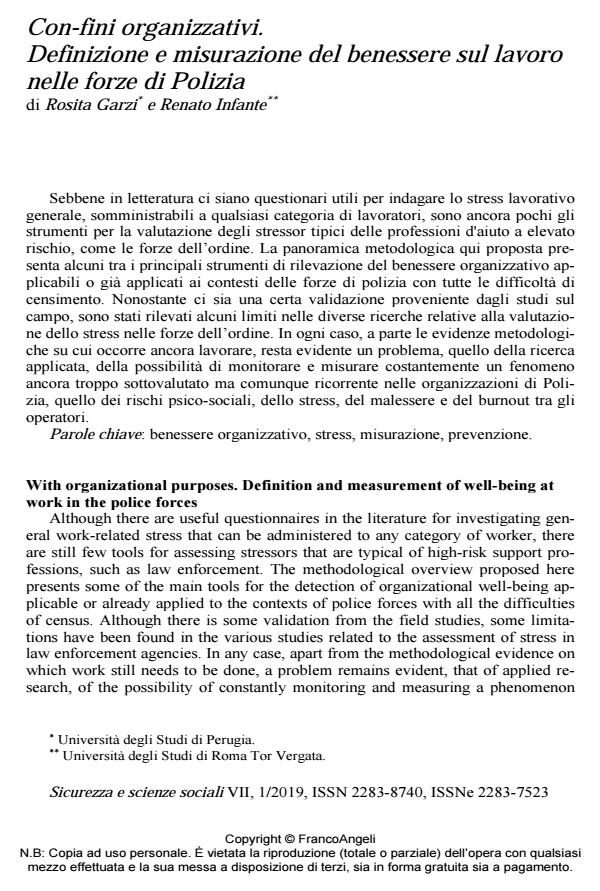With organizational purposes. Definition and measurement of well-being at work in the police forces
Journal title SICUREZZA E SCIENZE SOCIALI
Author/s Rosita Garzi, Renato Infante
Publishing Year 2019 Issue 2019/1
Language Italian Pages 17 P. 60-76 File size 232 KB
DOI 10.3280/SISS2019-001007
DOI is like a bar code for intellectual property: to have more infomation
click here
Below, you can see the article first page
If you want to buy this article in PDF format, you can do it, following the instructions to buy download credits

FrancoAngeli is member of Publishers International Linking Association, Inc (PILA), a not-for-profit association which run the CrossRef service enabling links to and from online scholarly content.
Although there are useful questionnaires in the literature for investigating general work-related stress that can be administered to any category of worker, there are still few tools for assessing stressors that are typical of high-risk support professions, such as law enforcement. The methodological overview proposed here presents some of the main tools for the detection of organizational well-being applicable or already applied to the contexts of police forces with all the difficulties of census. Although there is some validation from the field studies, some limitations have been found in the various studies related to the assessment of stress in law enforcement agencies. In any case, apart from the methodological evidence on which work still needs to be done, a problem remains evident, that of applied research, of the possibility of constantly monitoring and measuring a phenomenon which is still too underestimated but which is still recurrent in police organisations, that of psycho-social risks, stress, malaise and burnout among operators.
Keywords: Organizational well-being, stress, measurement, prevention.
Rosita Garzi, Renato Infante, Con-fini organizzativi. Definizione e misurazione del benessere sul lavoro nelle forze di Polizia in "SICUREZZA E SCIENZE SOCIALI" 1/2019, pp 60-76, DOI: 10.3280/SISS2019-001007